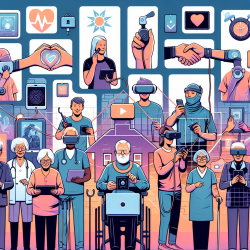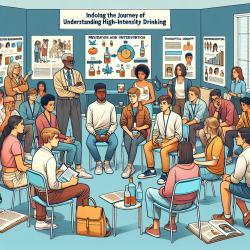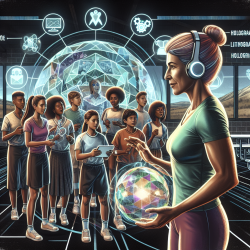Introduction
The evolution of information and communications technology (ICT) has revolutionized healthcare, making it more accessible and efficient. One area that has benefited significantly from this technological advancement is telerehabilitation, particularly for post-stroke aphasia. Aphasia, a common communication disorder following stroke, affects the language-dominant hemisphere of the brain, resulting in various language impairments. This blog explores the feasibility and acceptability of augmented telerehabilitation for post-stroke aphasia, based on a randomized controlled trial conducted by Hege Prag Øra and colleagues.
Methods and Materials
The study involved a pragmatic randomized controlled trial (RCT) that investigated the feasibility and acceptability of speech and language therapy delivered via videoconference to people with aphasia post-stroke. Participants received one hour of tailored intervention daily, five times a week, for four weeks. Feasibility was assessed through technical setup evaluations, while acceptability was measured by adherence, satisfaction, and data safety.
Results
Over a two-year period, 556.5 hours of telerehabilitation were delivered to 30 participants. The study recorded a high protocol adherence rate, with a tolerable technical fault rate. Of the 541 video sessions, 86 faults were registered, primarily due to internet connectivity issues. Despite these faults, satisfaction with the telerehabilitation was rated as good or very good by 93.1% of participants. The model demonstrated feasibility and readiness for implementation across various clinical settings.
Discussion
The study highlights several factors crucial for the successful implementation of telerehabilitation. The collaboration between clinical and technical experts was essential in developing a user-friendly and secure technical setup. The study also emphasizes the importance of stable internet connectivity, as it was the primary cause of technical faults. Interestingly, participants who experienced more faults reported higher satisfaction, possibly due to their anticipation of technical difficulties.
Conclusion
The findings suggest that synchronous telerehabilitation for post-stroke aphasia is both feasible and acceptable, with high satisfaction rates among patients and pathologists. The study underscores the need for clinical and technical expertise in developing telerehabilitation services and highlights the potential of telerehabilitation as a viable service delivery model for aphasia rehabilitation.
For more information, please follow this link.










